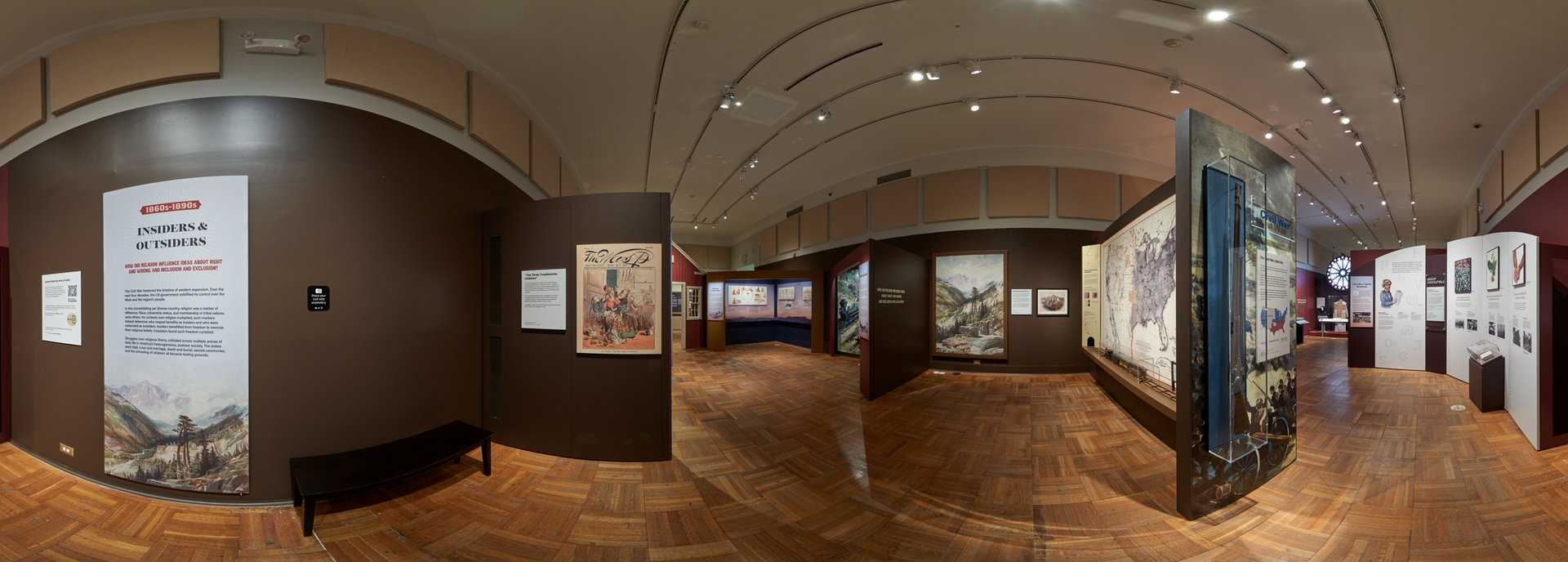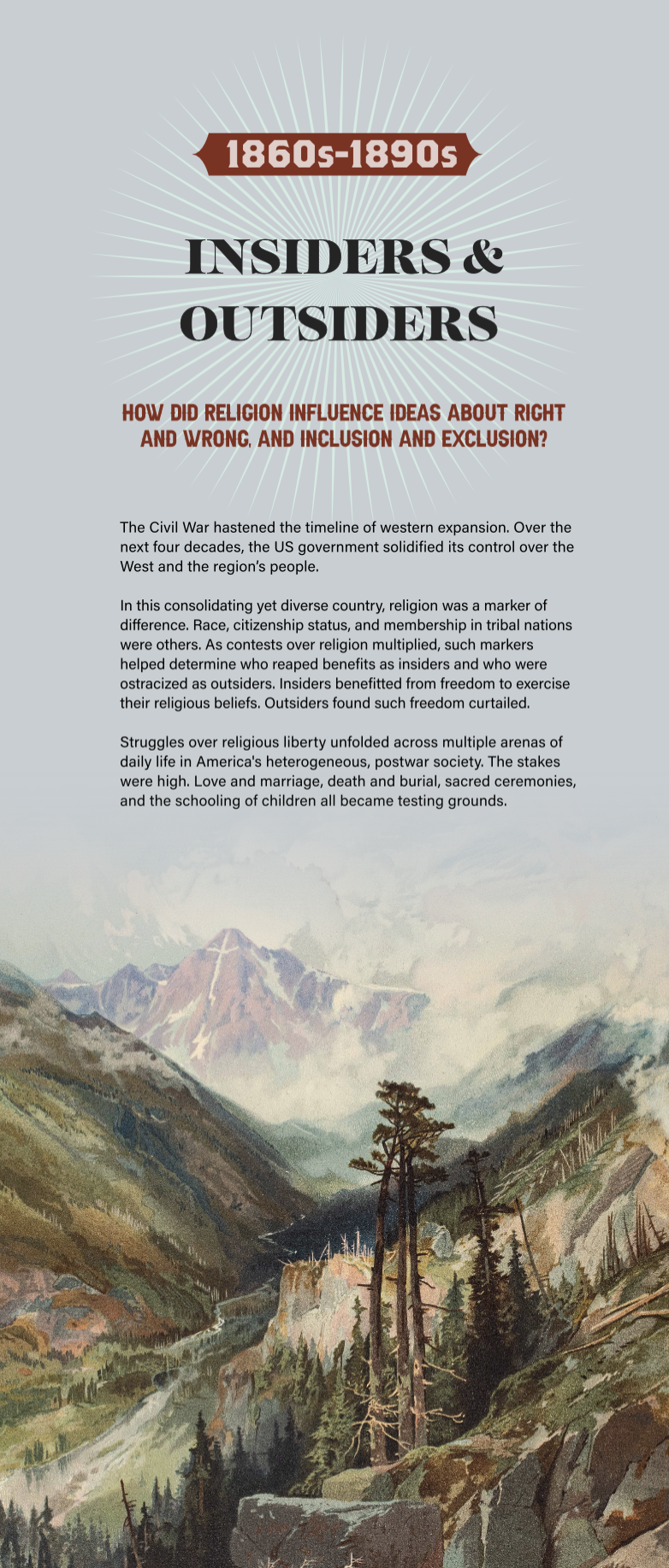





1860s–1890s
Insiders & Outsiders
How did religion influence ideas about right and
wrong, and inclusion and exclusion?
The Civil War hastened the
timeline of western expansion. Over the next four decades, the US government solidified
its control over the West and the region’s people.
In this consolidating yet
diverse country, religion was a marker of difference. Race, citizenship status,
and membership in tribal nations were others. As contests over religion
multiplied, such markers helped determine who reaped benefits as insiders and
who were ostracized as outsiders. Insiders benefitted from freedom to exercise
their religious beliefs. Outsiders found such freedom curtailed.
Struggles over religious
liberty unfolded across multiple arenas of daily life in America’s
heterogeneous, postwar society. The stakes were high. Love and marriage, death
and burial, sacred ceremonies, and the schooling of children all became testing
grounds.
